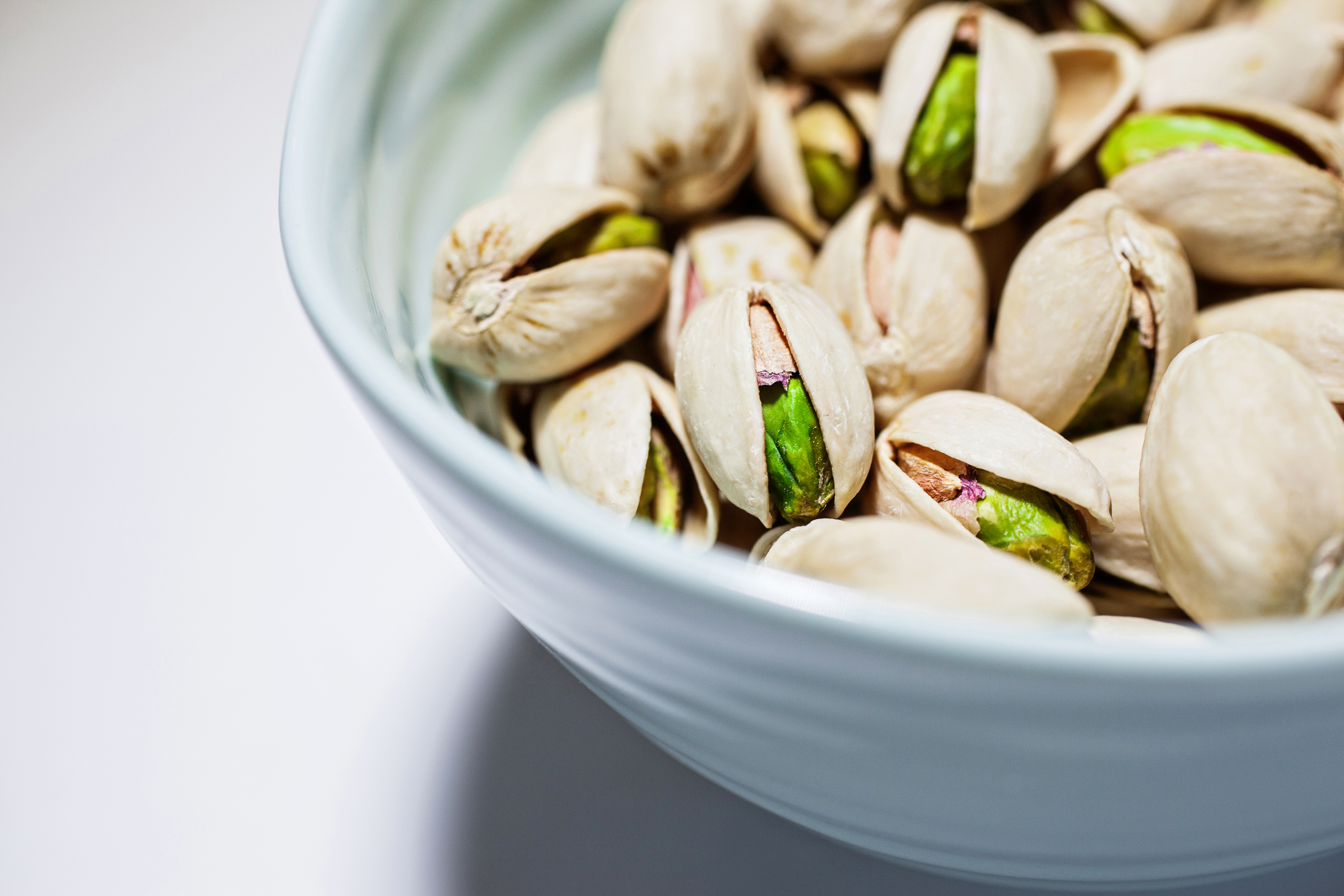American Pistachio Growers Celebrate World Pistachio Day with Good News
Just a week after the Dietary Guidelines Advisory Committee released its report to the Secretary of Health and Human Services and the Secretary of the U.S. Department of Agriculture (USDA), American Pistachio Growers, the trade association representing more than 625 pistachio grower members in California, Arizona and New Mexico is celebrating the good news today – on World Pistachio Day.
People who eat tree nuts on a daily basis, including pistachios, are making healthy choices, according to the report. The recommended guidelines emphasize a diet higher in plant-based foods including vegetables, fruits, whole grains, nuts and seafood to lower the risk of chronic diseases, particularly those associated with obesity. These recommendations are consistent with the findings of numerous science-based studies on the role of tree nuts, including pistachios, in preventing obesity and providing other health benefits. The report provides the scientific evidence for the next edition of the Dietary Guidelines for Americans, which are expected to be published by the end of 2015.
About two-thirds of U.S. adults are overweight or obese and about half of adults have one or more preventable chronic diseases. Poor dietary and physical activity patterns are associated with these conditions. Pistachios have been shown to play a positive role in weight management, blood sugar management, heart health and as a post exercise snack.
“It’s no wonder that more than 1/3 of Americans are obese. We’re eating too much salt, saturated fat, refined grains and added sugar resulting in excess weight, unhealthy blood sugar levels and deficiencies in calcium, fiber, folate, magnesium, potassium and vitamins A, D, E, and C,” says Cheryl Forberg, Nutrition Ambassador to American Pistachio Growers.
Forberg continues, “Thankfully, the new guidelines suggest more whole foods: vegetables, fruits, whole grains, dairy, nuts, such as pistachios, and seeds to offset our nutrient needs and promote healthier weights and blood sugar levels.” One of the nation’s leading advisors on health and nutrition, Cheryl is a New York Times bestselling author, James Beard award-winning chef and the nutritionist for NBC’s “The Biggest Loser.”
Pistachios a Source of Important Shortfall Nutrients
Pistachios can help consumers meet a minimum of shortfall nutrients identified by the Dietary Guidelines Advisory Committee while limiting overconsumption of sodium and saturated fatty acids. These nutrients include vitamins A, D & C, folate, calcium, magnesium, fiber, potassium, and iron for adolescent and premenopausal women. Of these, calcium, vitamin D, fiber, potassium and iron are considered of public health concern.
A 1-ounce 160 calorie serving of pistachios provides:
- 290 mg potassium (8% Daily Value)
- 3 g total fiber (12 % Daily Value) making pistachios a “good” source of fiber
- 6% Daily Value of iron
- 8% Daily Value for magnesium
In addition, unsalted pistachios are a sodium-free food. Pistachios provide 13 g of total fat primarily monounsaturated fatty acids (7 g) and polyunsaturated fatty acids (4 g) with about 1.5 g saturated fatty acids.
Three USDA-Recognized Healthy Diet Patterns Include Nuts
The Committee encouraged consumers to adopt dietary patterns low in saturated fat, added sugars and sodium. These include Healthy U.S.-Style, Healthy Vegetarian and Healthy Mediterranean diets. Such patterns are:
- Rich in vegetables, fruits, whole grains, seafood, legumes, and nuts such as pistachios
- Moderate in low- and non-fat dairy products
- Lower in red and processed meat
- Low in sugar sweetened foods and beverages and refined grains
About American Pistachio Growers
American Pistachio Growers (APG) is a non-profit voluntary agricultural trade association representing more than 625 grower members in California, Arizona and New Mexico. APG is governed by a democratically-elected board of directors and is funded by growers and independent processors with the shared goal of increasing global awareness of nutritious American-grown pistachios. For more information, visit AmericanPistachios.org.











